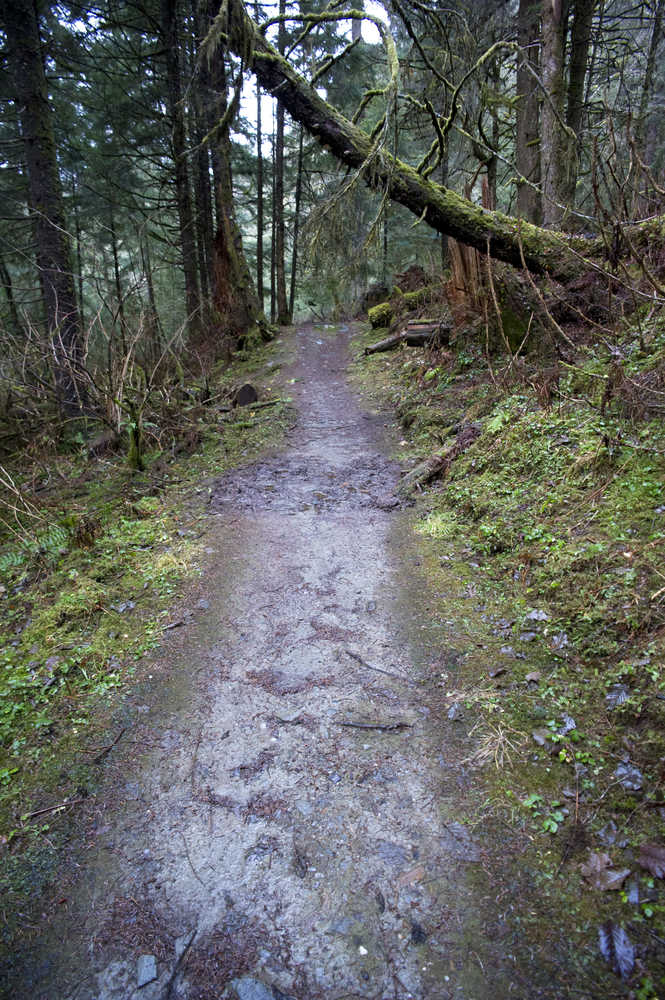Trapping, an outdoors activity commonly associated with the Last Frontier, actually happens farther from home than many people might imagine — or at least Juneau trails.
This is what the Alaska Department of Fish and Game and the Juneau Chapter of the Alaska Trappers Association want to educate the public on, especially dog walkers and other trail users.
At the “Sharing the Trails” presentation happening today from 7-9 p.m. at the Dzantik’I Heeni Middle School library, ADFG and Juneau trappers will educate the public on where trapping is and isn’t allowed, how traps work and what to do if they are encountered.
Riley Woodford, the information officer for the Division of Wildlife Conservation, told the Empire that the event is meant “to demystify trapping.” Every year, he explained, ADFG holds the “Sharing the Trails” event during trapping season to alleviate people’s concerns about running into a trap while enjoying the outdoors. Woodford, who has attended and helped organize the last several years’ events, said people are a bit apprehensive when they walk in the door, but relax when they understand that traps are usually far away from where people walk with their canine companions.
These situations happen periodically, which is why there is community concern and why ADFG holds these presentations to educate the public. In March 2008, a basset hound was caught in a conibear trap on the Eagle River Trail in Juneau and died; it was determined to be in an area legal for trapping. In December 2014, a bald eagle was caught in a snare on the Davies Creek Trail and was freed by a Juneau woman, who also sprung nearby traps to protect her dogs, she said, which got her into legal trouble; the freed eagle later had to be euthanized. Also in December 2014, a chocolate lab was caught in a foothold style trap set illegally on Point Lena Trail. The dog was not badly injured.
At today’s event, two different types of traps — the conibear and a long spring foothold trap — will be shown; both are used for small animals like weasels, martens and beaver. People will be taught where they will be located and how they work. Participants will also be shown how to release their pets from these traps in case a situation ever occurs.
Woodford said the most common type of trapping that happens in Southeast Alaska is for marten, which are almost exclusively trapped in trees in a kind of box which he said is comparable to the size and shape of an Empire mail box.
With marten traps, they must be five feet above the ground, and if it has snowed, they must be five feet above the snow line. These traps must be 50 yards away from all roads and trails.
Trapping is closed a quarter of a mile off the coast on the mainland between the end of Thane Road to Echo Cove. All traps must be a quarter of a mile from all coastline on the mainland (and Douglas) as well as a quarter of the mile away from all roads and trails (the one exception being marten).
“People cannot trap on the wetlands, Auke Lake, basically anywhere in the Mendenhall Valley,” Woodford said.
Trapping is fairly restricted in the Juneau area, Woodford said, and usually trappers go to Admiralty Island or the backside of Douglas to do trapping.
For anyone who wishes to learn more about trapping but cannot make the presentation, they can go to “Sharing the Trails” on the ADFG website to see videos on how to release a pet from traps and snares as well as access more trapping and trail information on the sidebar: adfg.alaska.gov/index.cfm?adfg=trapping.main.
• Contact Clara Miller at 523-2243 or at clara.miller@juneauempire.com.

